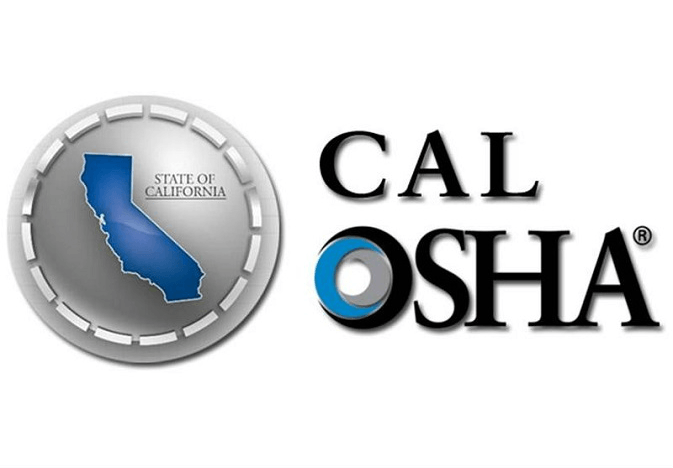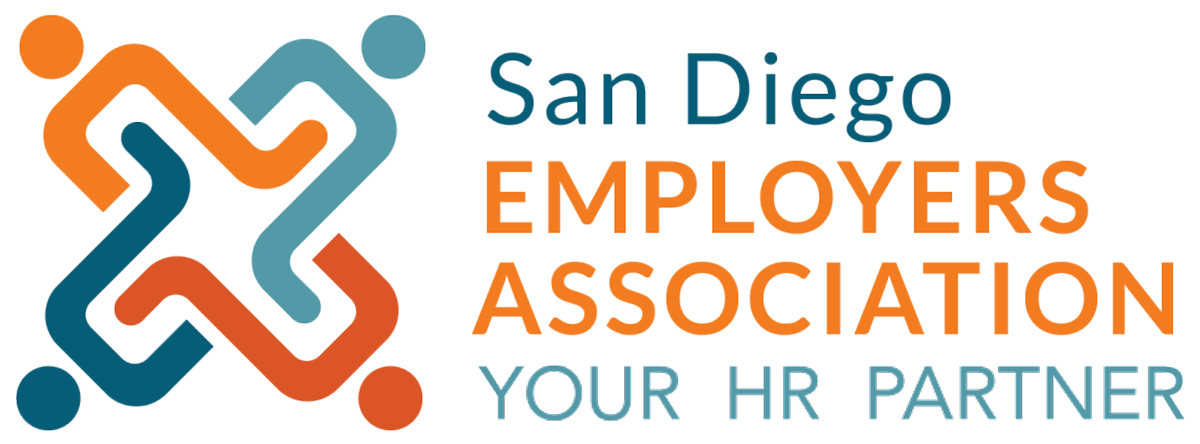12.10.20
By Molly Wood, SPHR. SDEA HR Consultant
Cal-OSHA recently implemented emergency standards due to COVID-19 and the likelihood that the holidays will cause a spike in cases. Here is what you need to know to navigate these crazy times.
Do you need to be concerned?
It may be that your organization will not be affected by the new standards. If your company meets the following criteria, you get ten minutes of your life back and don’t need to read the rest of this article:
- You are a place of employment who does not have contact with other persons;
- Your employees work from home; or
- Your employees are already covered by the aerosol transmission standard (ATD)
Everyone else, read on.
Written Plan
You will need to have a written COVID-19 Prevention Plan. Many of the required items should have already been addressed in your Social Distancing and Sanitation Protocols and your Safe Reopening Plan. Areas that you may not have highlighted that are necessary in your prevention plan are:
- A system for communicating that includes;
- Asking employees to report COVID-19 symptoms, possible exposures, and possible COVID-19 hazards in the workplace
- Describing procedures or policies for accommodating employees with medical or other conditions that put them at risk for severe COVID-19 illness
- Providing information about access to testing
- Information about COVID-19 hazards and your policies and procedures
- Identification and correction of COVID-19 hazards
- Your procedures for investigating and responding to COVID-19 cases in the workplace
- Your method for training employees on COVID-19 guidelines
- Your reporting and recordkeeping procedures
- Your method for excluding employees who have had “COVID-19 exposure” or are a “COVID-19 case”
- Your protocols for “COVID-19 exposure” and “COVID-19 case” return to work
Notice of Exposure
Employers are required to provide notice of potential exposure to all employees, employee’s authorized representatives, and independent contractors and other employers present at the workplace during a high-risk exposure period who may have had COVID-19 exposure in the workplace.
Employers are required to track all COVID-19 cases with the employee’s name, contact information, occupation, location where the employee worked, the date of the last day at the workplace and the date of a positive COVID-19 test. This information should be made available to employees and authorized employee representatives, with the personal identifying information removed.
And now the scary part
Both employees who are considered to be COVID-19 cases and COVID-19 exposures are to be “excluded from the workplace” (meaning they can’t come into the work facility) for 10 – 14 days depending on the situation. During the time they are excluded from the workplace, if they are otherwise available to work, employers are obligated to continue earnings, seniority, all other employment rights and benefits, and they employee must return to their former job status.
Employers may use employer provided sick leave and consider benefit payments from public sources (e.g. Disability Insurance) as a way to maintain earnings. The order does not mention vacation/PTO, but if your company policy states that the employer may require use of vacation/PTO benefits, those could presumably be applied.
“COVID-19 case” means a person who: (1) Has a positive “COVID-19 test” as defined in this section; (2) Is subject to COVID-19-related order to isolate issued by a local or state health official; or (3) Has died due to COVID-19, in the determination of a local health department or per inclusion in the COVID-19 statistics of a county.
“COVID-19 exposure” means being within six feet of a COVID-19 case for a cumulative total of 15 minutes or greater in any 24-hour period within or overlapping with the “high-risk exposure period” defined by this section. This definition applies regardless of the use of face coverings.
“High-risk exposure period” means the following time period: (1) For persons who develop COVID-19 symptoms: from two days before they first develop symptoms until 10 days after symptoms first appeared, and 24 hours have passed with no fever, without the use of fever-reducing medications, and symptoms have improved; or (2) For persons who test positive who never develop COVID-19 symptoms: from two days before until ten days after the specimen for their first positive test for COVID-19 was collected.
And so much more
There are 21 pages in this order, and a lot more is addressed including details regarding communication systems and investigations, when to report to local health agencies, and what needs to be done if there is an “outbreak” (three or more cases in an exposed workplace within a 14-day period). This order is in effect for 180 days starting November 30, 2020 and can be extended.
Here is a link to the order, and SDEA is here to help guide you through your specific situation. Enjoy your holidaze, call us when you need us, and ask Santa for a vaccine!
*Note: This article is written based on the most recent information available from CalOSHA specifically. As we all know, protocols, guidance, and mandates are changing all the time. The California Department of Public Health, CDC, and other agencies may provide differing guidelines.




